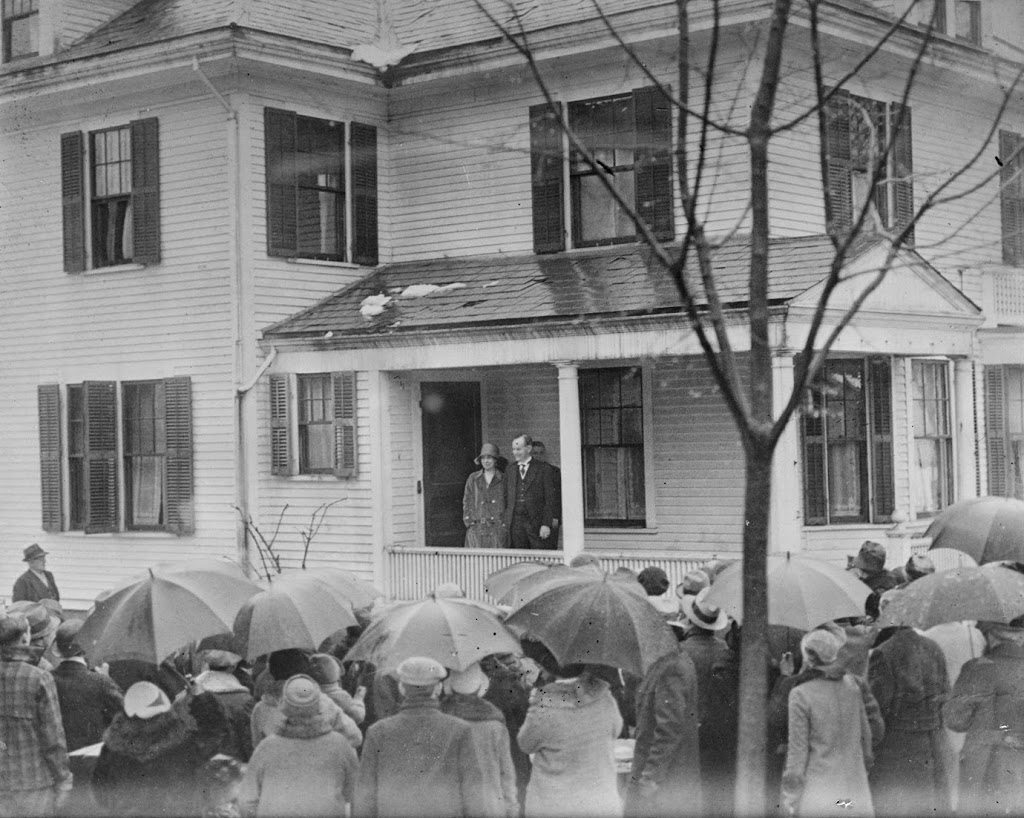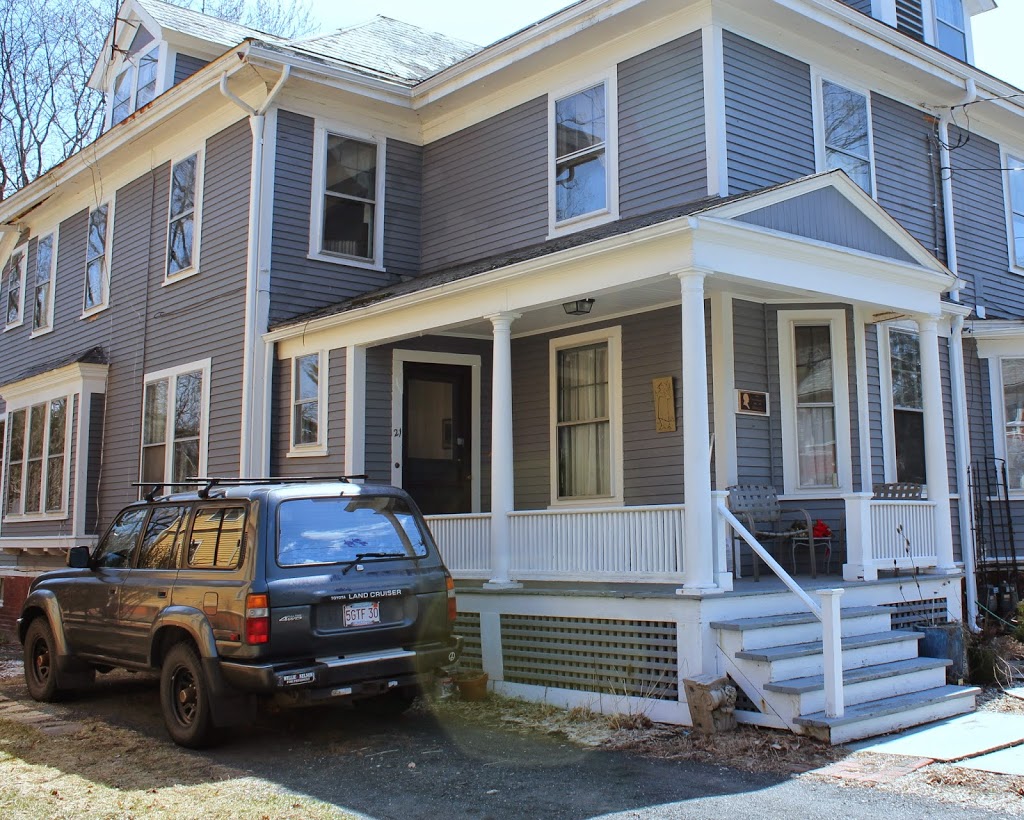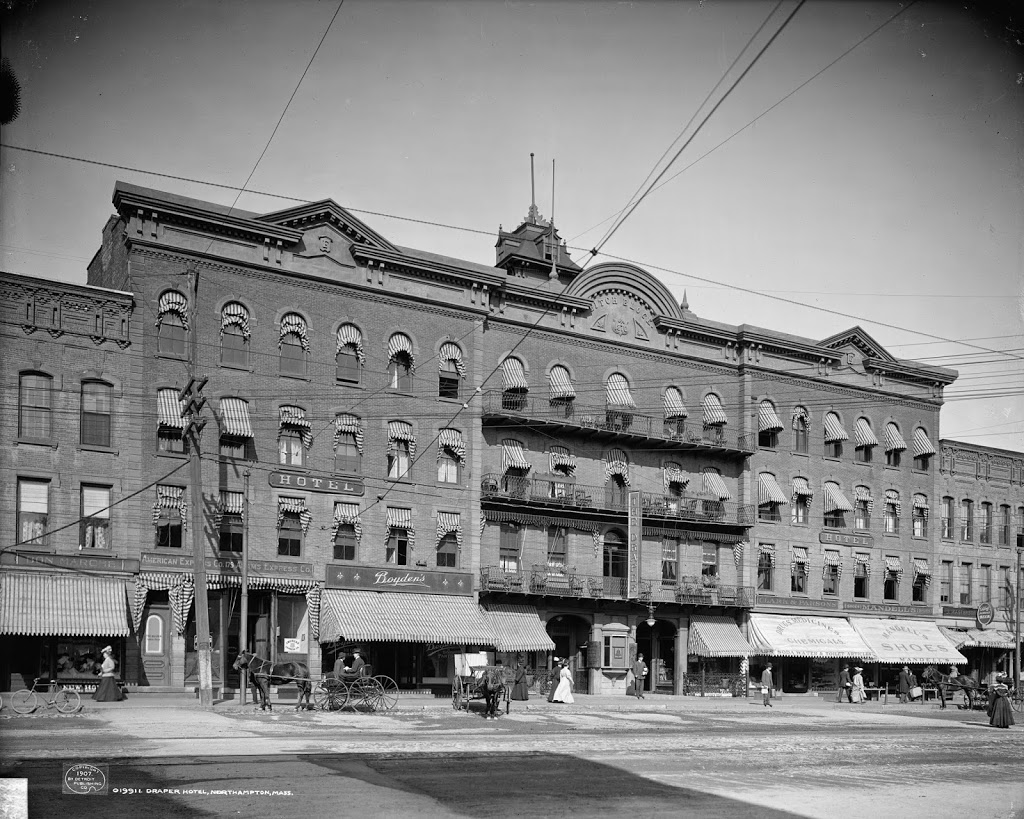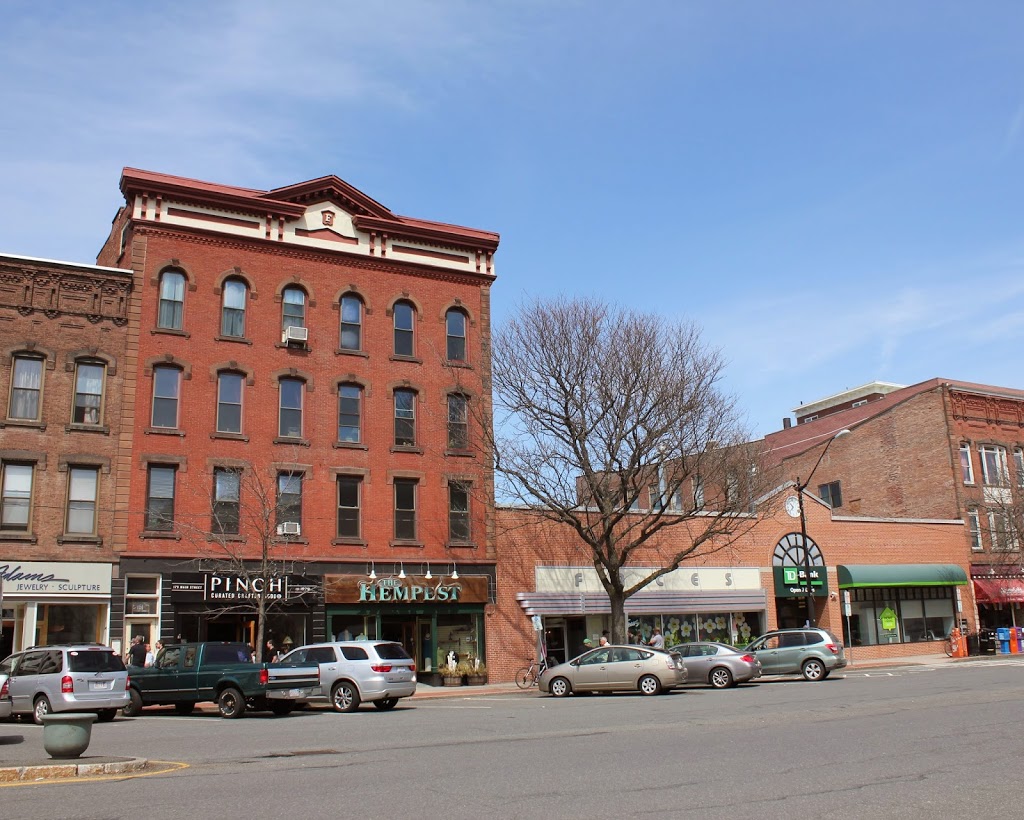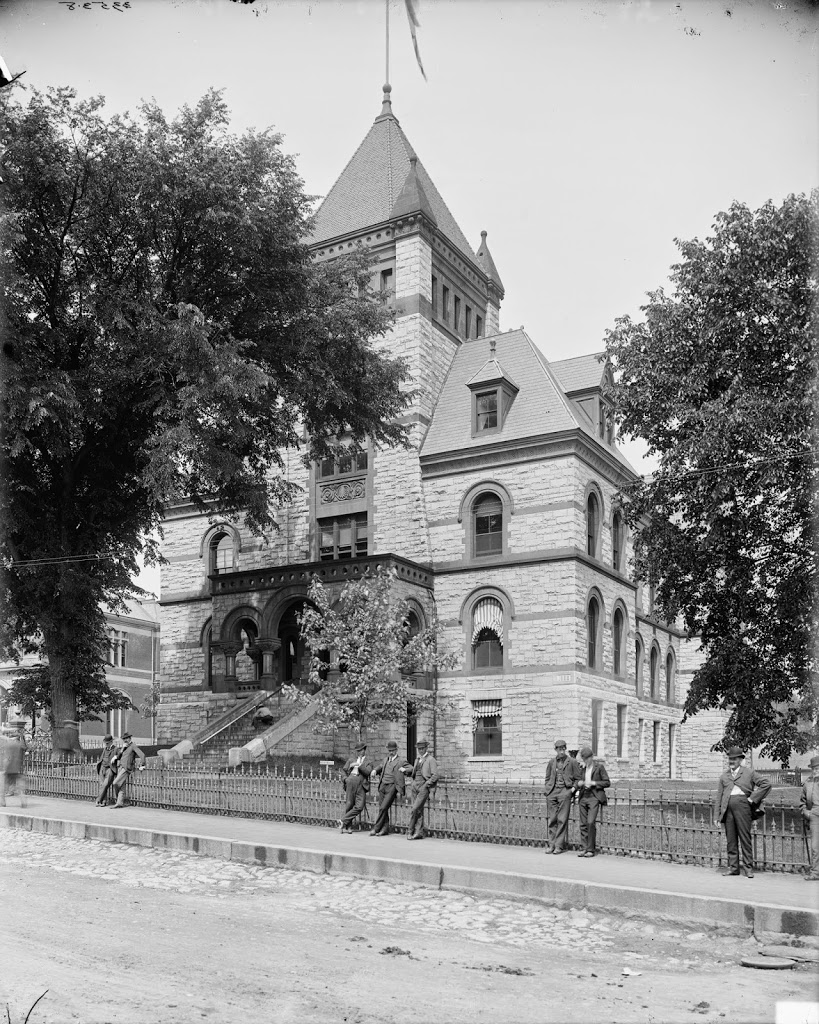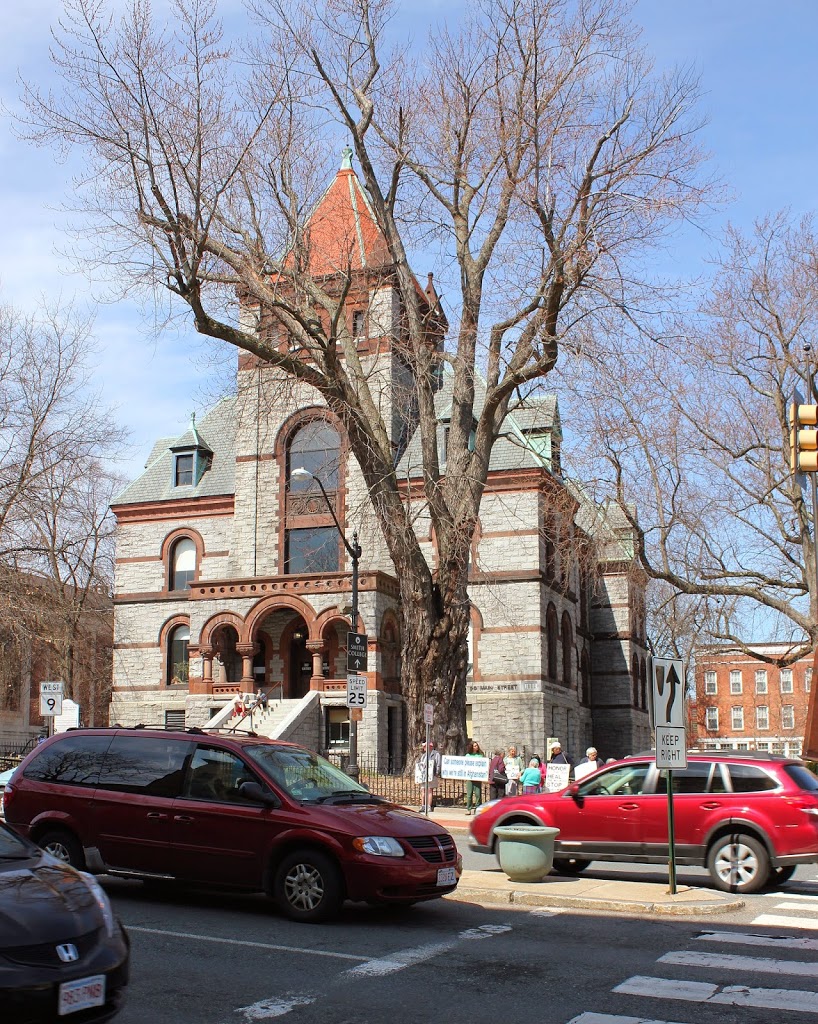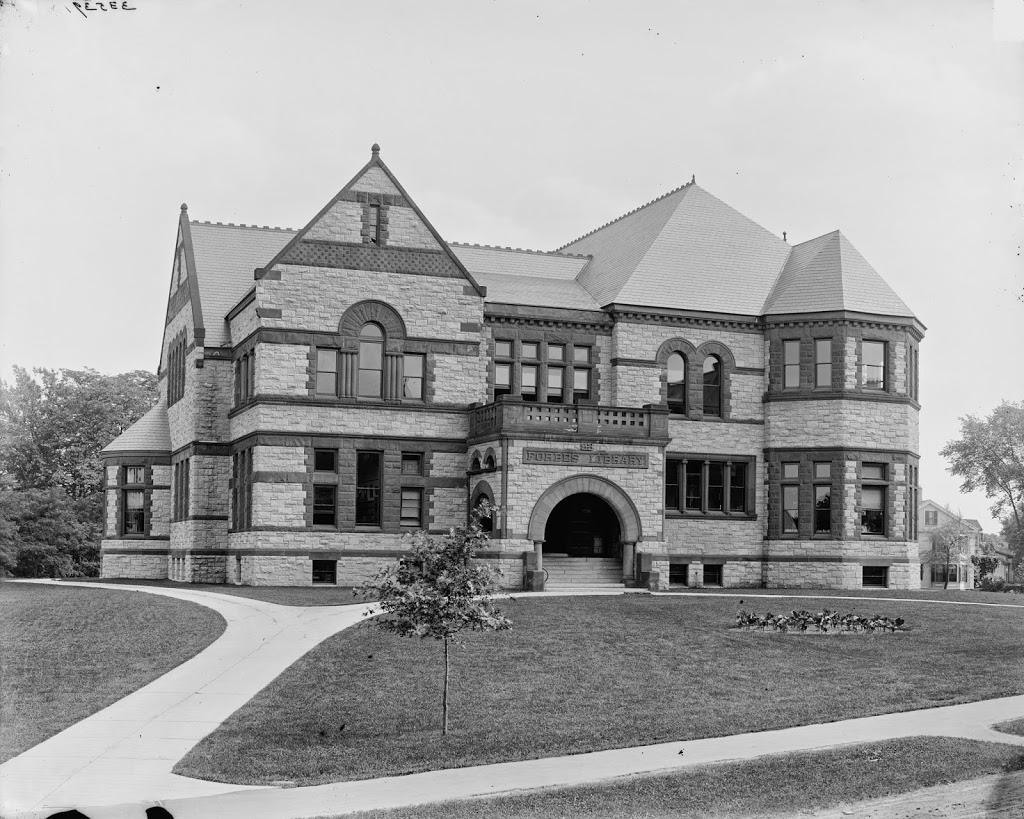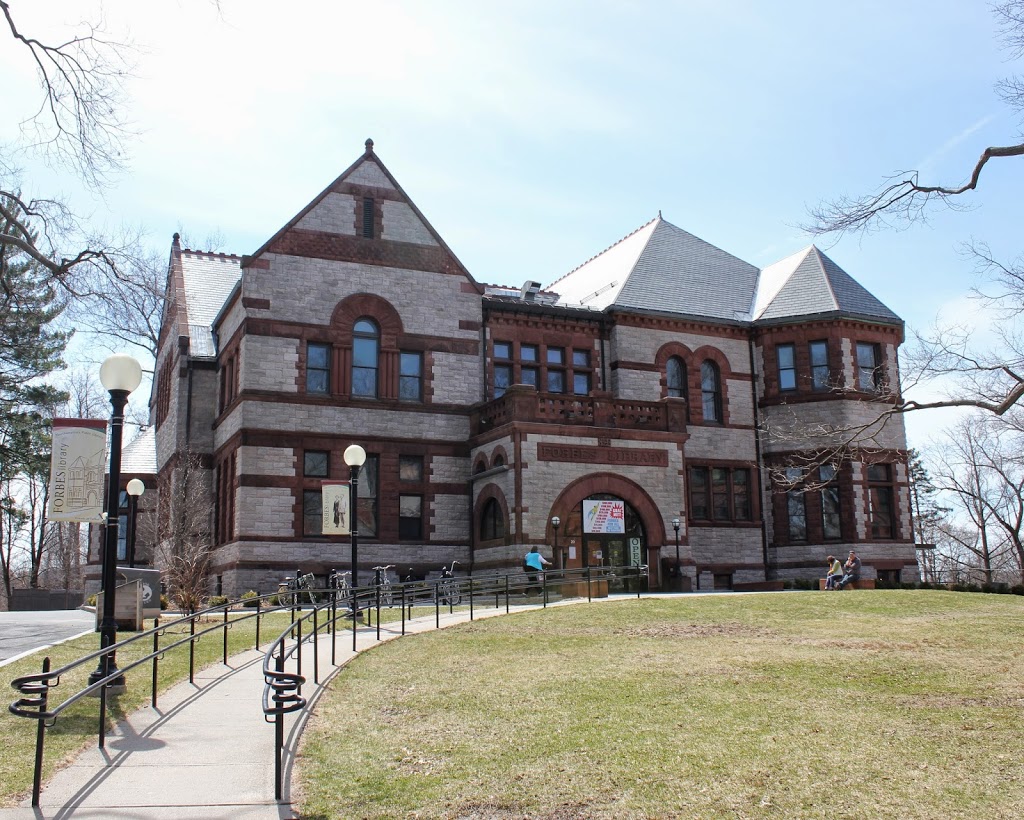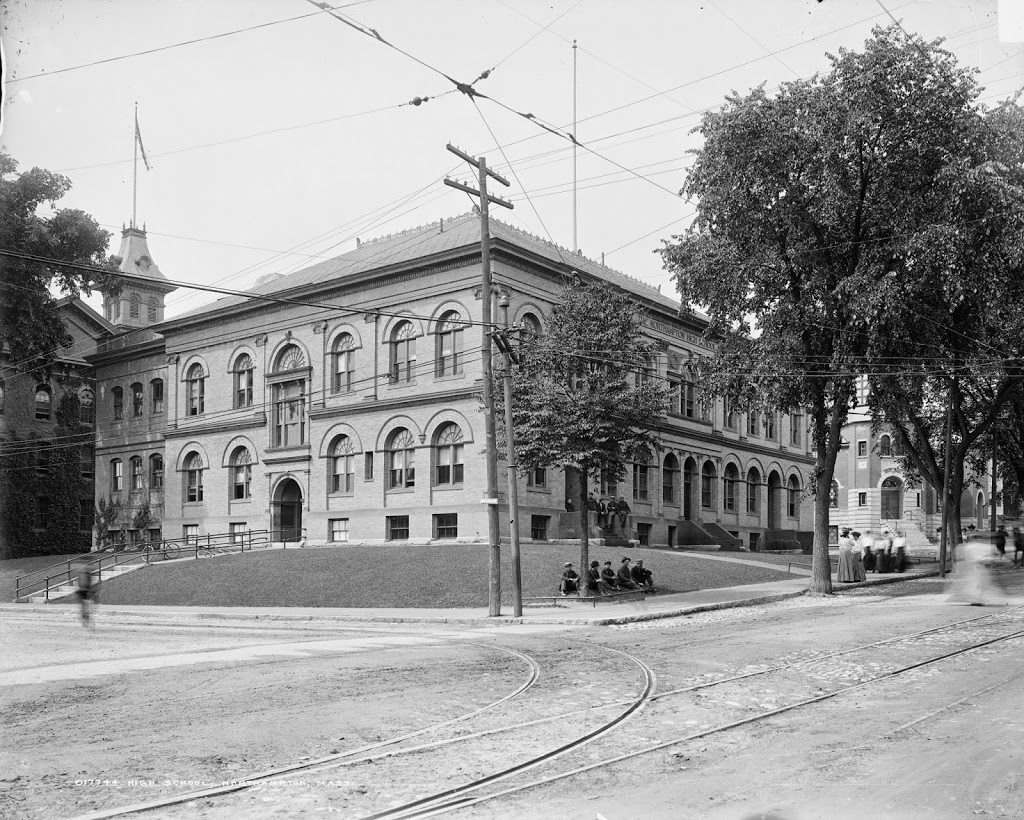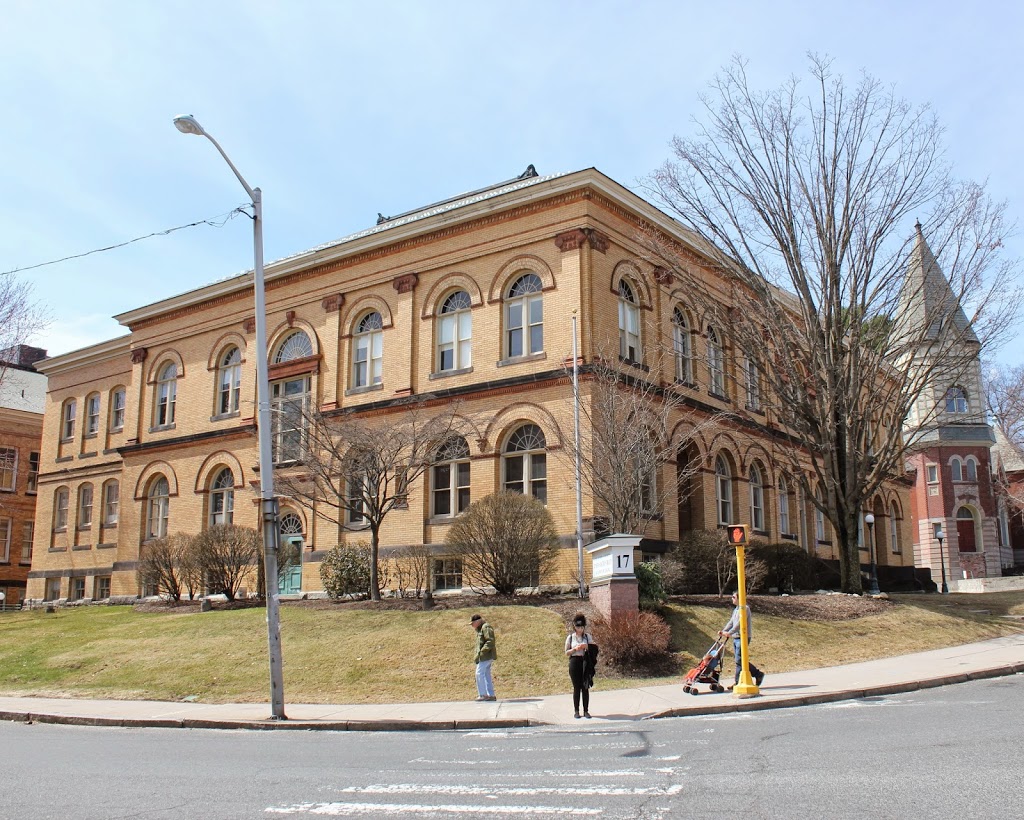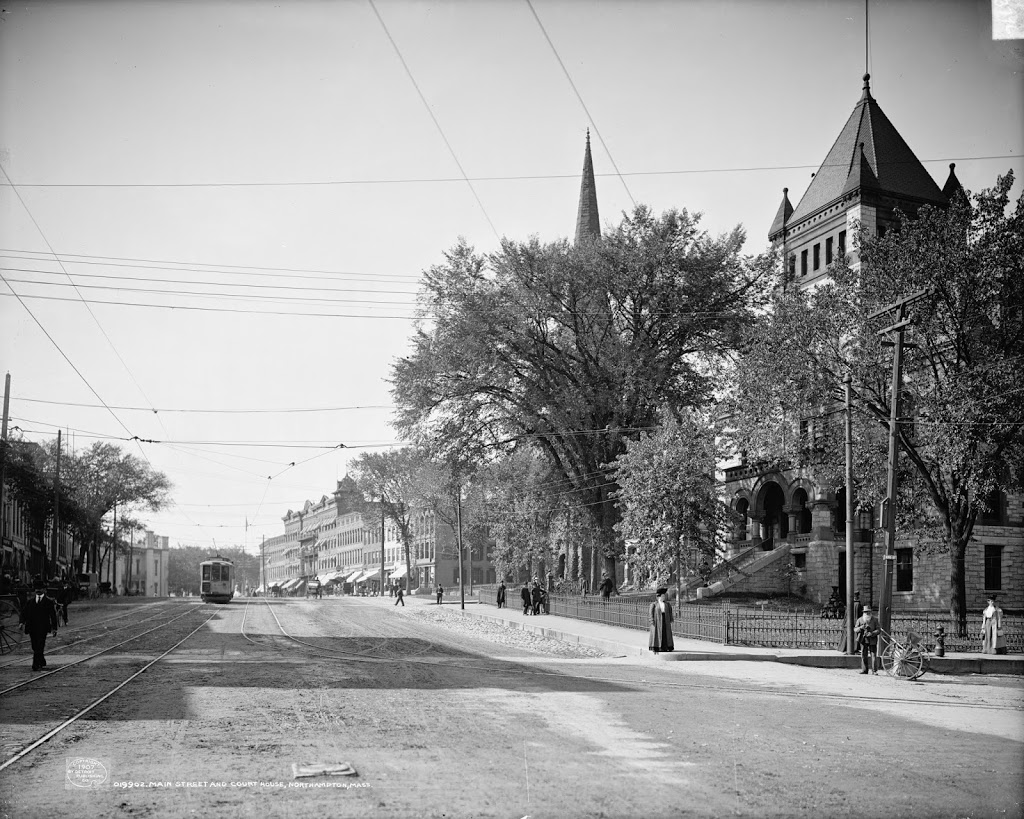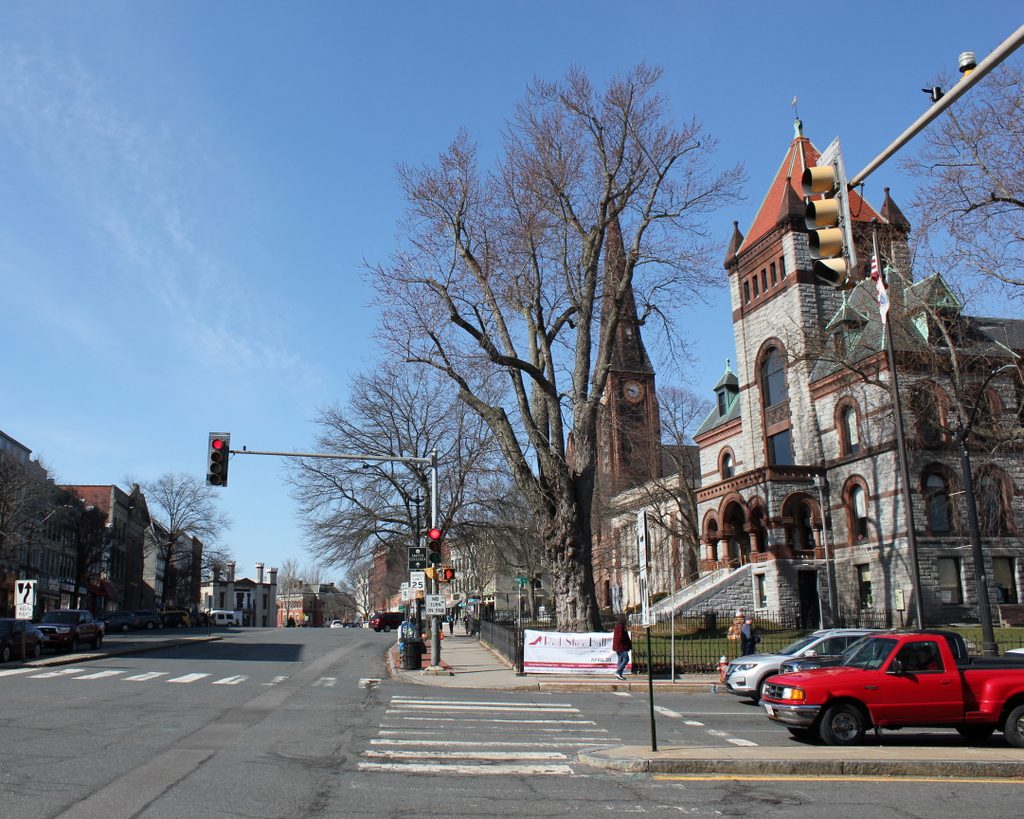Calvin & Grace Coolidge in March 1929, after returning home from Washington DC. Photo courtesy of Boston Public Library, Leslie Jones Collection.
The view in 2014:
After serving as president from 1923 to 1929, Calvin Coolidge and his wife Grace returned to their home at 21 Massasoit Street in Northampton Mass. They lived here in the left-hand side of the duplex from 1906 until 1930, and the first photo above shows them after they returned home from Washington DC, following the conclusion of Coolidge’s second term as president. In 1930, they moved into a much larger and more secluded house, The Beeches, located at 16 Hampton Terrace, where Calvin Coolidge died in 1933.

